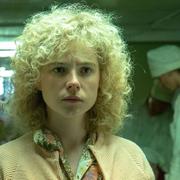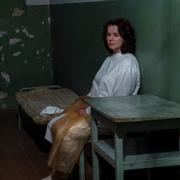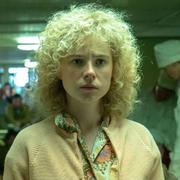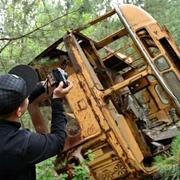
Stellan Skarsgård spelar i HBO-serien ”Chernobyl”
Stellan Skarsgård kommer ha en av rollerna i den svenskregisserade serien ”Chernobyl”, som börjar spelas in i vår oh handlar om kärnkraftskatastrofen i Tjernobyl. Det skriver DN.
– Den är jättebra skriven, det kan bli väldigt bra, säger skådespelaren till tidningen.
Serien, som görs av HBO i samarbete med Sky Television, regisseras av Johan Renck.
bakgrund
Tjernobylolyckan
Wikipedia (en)
The Chernobyl disaster, also referred to as the Chernobyl accident, was a catastrophic nuclear accident. It occurred on 26 April 1986 in the No.4 light water graphite moderated reactor at the Chernobyl Nuclear Power Plant near Pripyat, a town in northern Ukrainian Soviet Socialist Republic which was part of the Soviet Union (USSR).
The event occurred during a late-night safety test which simulated a station blackout power-failure and in which safety systems were deliberately turned off. A combination of inherent reactor design flaws and the reactor operators arranging the core in a manner contrary to the checklist for the test, eventually resulted in uncontrolled reaction conditions. Water flashed into steam generating a destructive steam explosion and a subsequent open-air graphite fire. This fire produced considerable updrafts for about nine days. These lofted plumes of fission products into the atmosphere. The estimated radioactive inventory that was released during this very hot fire phase approximately equalled in magnitude the airborne fission products released in the initial destructive explosion. Practically all of this radioactive material would then go on to fall-out/precipitate onto much of the surface of the western USSR and Europe.
The Chernobyl accident dominates the energy accidents sub-category, of most disastrous nuclear power plant accident in history, both in terms of cost and casualties. It is one of only two nuclear energy accidents classified as a level 7 event (the maximum classification) on the International Nuclear Event Scale, the other being the Fukushima Daiichi nuclear disaster in Japan in 2011. The struggle to safeguard against scenarios which were, at many times falsely, perceived as having the potential for greater catastrophe and the later decontamination efforts of the surroundings, ultimately involved over 500,000 workers and cost an estimated 18 billion rubles.
During the accident, blast effects caused 2 deaths within the facility, later 134 were hospitalized with acute radiation symptoms, of which 28 firemen and employees died in the days-to-months afterward from the effects of acute radiation syndrome, in addition, approximately 14 cancer deaths amongst this group of initially hospitalized survivors was to follow within the next ten years(1996). Whilst among the wider population, an excess of 15 childhood thyroid cancer deaths had been documented as of 2011. It will take further time and investigative funding to definitively determine the elevated relative risk of cancer amongst both the surviving employees and the population at large.
The remains of the No.4 reactor building were enclosed in a large cover which was named the "Object Shelter". It is often known as the sarcophagus, and its purpose is to reduce the spread of radioactivity from the wreckage and to protect the wreckage from the elements. It was finished in December 1986 at a time when what was left of the reactor was entering the cold shut-down phase; the enclosure was not intended as a radiation shield, but was built quickly as occupational safety for the crews of the other undamaged reactors at the power station, with No.3 continuing to produce electricity into 2000.
The accident motivated safety upgrades on all remaining Soviet-designed reactors in the RBMK (Chernobyl No.4) family, of which eleven continued to power electric grids as of 2013.
Omni är politiskt obundna och oberoende. Vi strävar efter att ge fler perspektiv på nyheterna. Har du frågor eller synpunkter kring vår rapportering? Kontakta redaktionen



